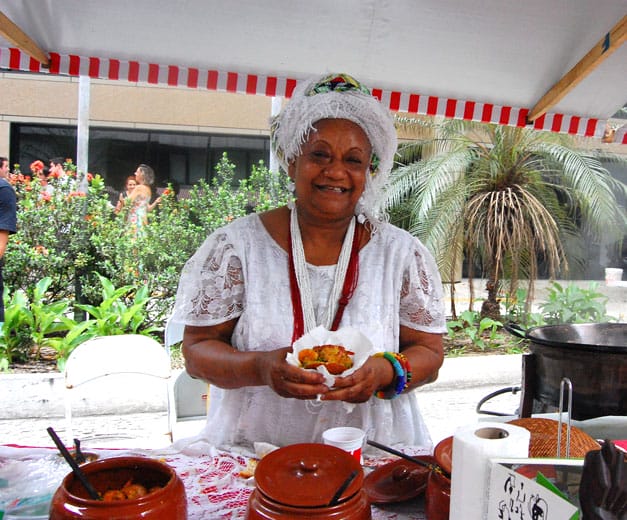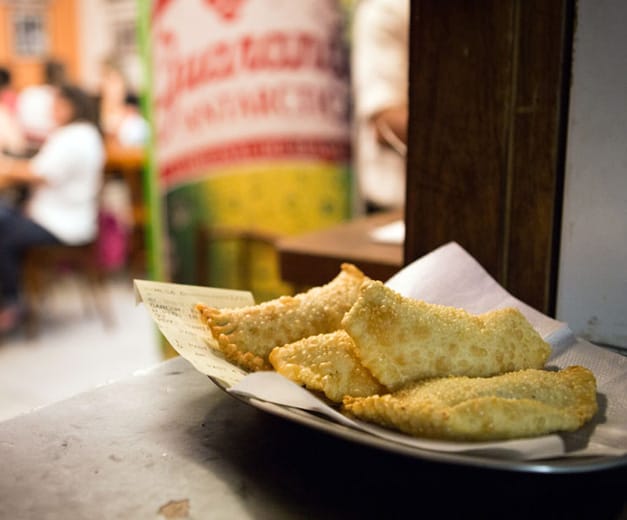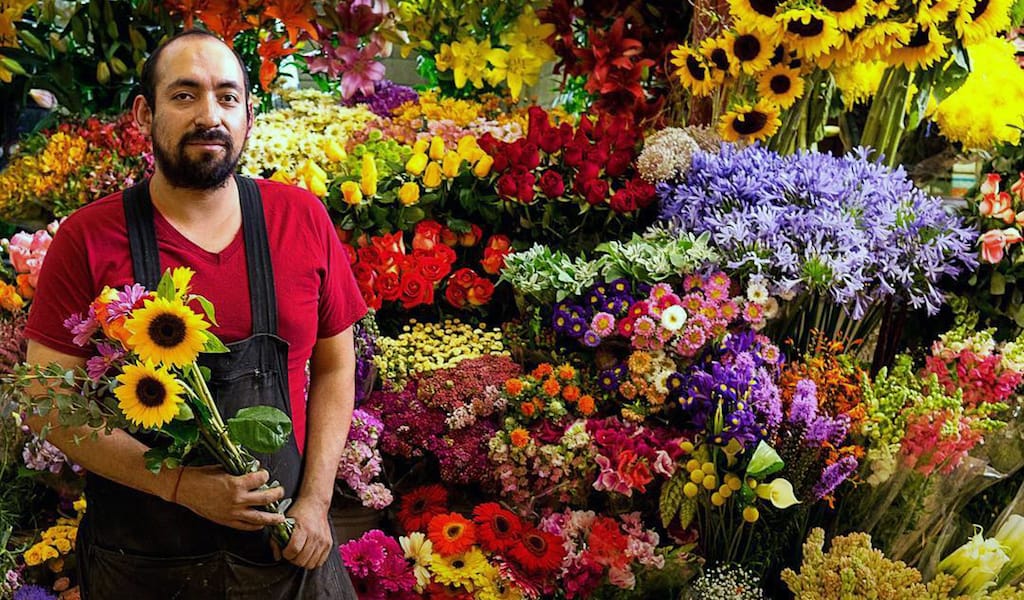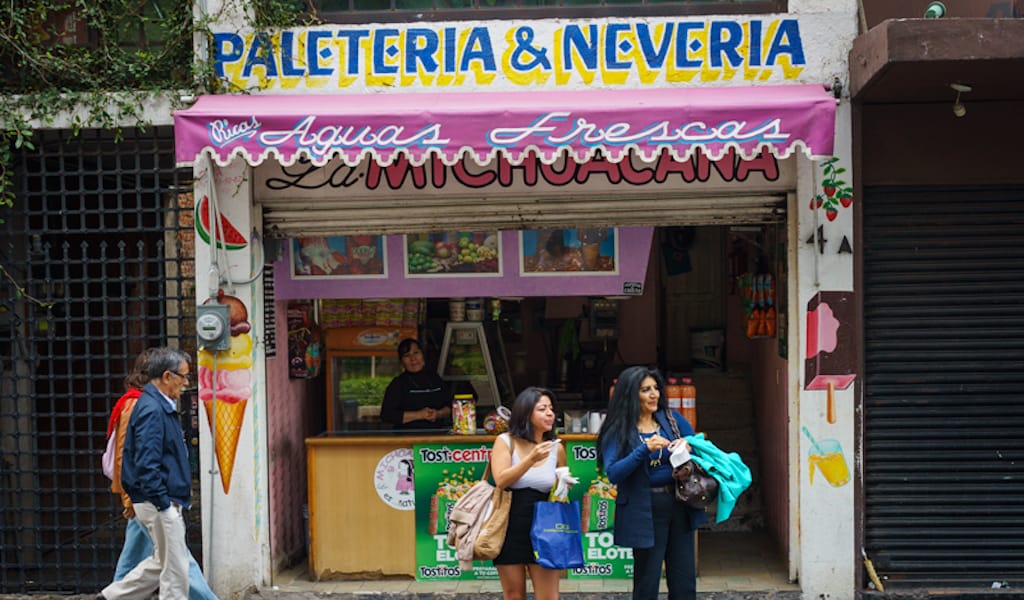For Carnival in Rio, new blocos, or free street parties, are born every year when creative friends put their heads together to dream up a theme and a combination of musicians that will tempt partygoers for a magical few hours. New blocos publicize and build momentum via open “rehearsals” in the weeks leading up to Carnival that are parties in and of themselves. If these rehearsals bombar (explode with excellence), word spreads fast, and the bloco comes roaring to life during Carnival and for years to come.
After a rain-drenched second rehearsal at which partygoers still did the conga line for hours, Rio’s first gastronomical bloco, Põe Na Quentinha (“Put it in the takeout box”), upped the game with a third rehearsal and final show, each of which turned from live samba classics to a DJ spinning ’70s funk, keeping dancers jubilant late into the night.
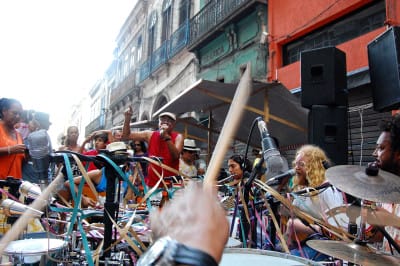 In addition to leaving our lips smacking in appreciation of Rio’s food scene, Põe Na Quentinha tells a story of place: Rio’s historic Port Zone. It was at a bar in the Port Zone, Cine Botequim, where the idea for the bloco was hatched, and in front of Cine Botequim where the rehearsals and final show unfolded – amidst the colonial row houses, cobbled streets and signs of rehab construction that have come to characterize the area today. Because this is the oldest part of the city and still includes both neighborhoods and commercial space, its cuisine is as diverse as that of the city as a whole, and Põe Na Quentinha partygoers had an array of Rio classics from which to choose.
In addition to leaving our lips smacking in appreciation of Rio’s food scene, Põe Na Quentinha tells a story of place: Rio’s historic Port Zone. It was at a bar in the Port Zone, Cine Botequim, where the idea for the bloco was hatched, and in front of Cine Botequim where the rehearsals and final show unfolded – amidst the colonial row houses, cobbled streets and signs of rehab construction that have come to characterize the area today. Because this is the oldest part of the city and still includes both neighborhoods and commercial space, its cuisine is as diverse as that of the city as a whole, and Põe Na Quentinha partygoers had an array of Rio classics from which to choose.
Starring in the bloco’s food lineup was Port Zone acarajé vendor Sonia Menezes. Acarajé is a typical dish from the northern Brazilian state of Bahia, but its abundance in Rio today speaks to a larger story of migration from the country’s challenging northeast to its southern business hubs. Menezes herself is originally Bahian and now lives at the base of Rio’s first favela, Providência, just blocks away from Cine Botequim and the Põe Na Quentinha party site.
Acarajé is crunchy, savory, steamy and spicy. Its base is a fist-sized ball of dough made with whipped black-eyed peas and salt, which is deep-fried in red palm oil (azeite de dendê), sliced in half and stuffed with vatapá (coconut milk, cashew and pepper paste), carurú (spiced okra) and shrimp. Acarajé came to Brazil via slave kitchens; its West African mother dish, akara, is still found on the streets of Nigeria. Before the Atlantic slave trade, the fried bean patty was brought to West Africa beginning in the 7th century by Middle Eastern explorers, who inspired African cooks with their native chickpea and fava bean patty, known today as falafel.
More than simply a recipe, the process of preparing acarajé is linked to West African religious practices, and many traditional acarajé cooks remain observers of the Afro-Brazilian faith Candomblé and worship one of its spiritual figures, Iansã. For Sonia Menezes, Bahian acarajé cooks represent perseverance and care for others, and Menezes herself is a deep listener who is quick to pinpoint larger truths in life stories shared by friends and acquaintances. At 65, she is quick to laugh and hit the dance floor when the time calls, as it did at the gastronomical bloco.
One point of wisdom in practice for Menezes is adapting to the changing diets of cariocas and visitors to Rio. These days she sees more people who have food allergies or are vegetarians, or in her words, “people who are afraid of eating.” But “you can innovate without having to abandon your identity,” she says, and has created a popular peanut and ginger adaption of acarajé filling so that (most) dietary restrictions will not keep eaters from the love.
Joining Menezes in representing the Port Zone at the bloco was Silvania Lucia, a 30-year resident of the Saúde neighborhood and creator of the clothing line Tramas do Porto (Tales of the Port Zone), which adorns shirts and adult jumpers (join the craze!) with felt depictions of neighborhood icons such as Pedra do Sal, the nearby birthplace of Rio samba. “The clothes become a storytelling tool so that even people who cannot read can start talking and learning about the history here,” says Lucia, who has created special shirts for Põe Na Quentinha itself and for Prata Preta, another neighborhood bloco. Ten-year-old Prata Preta pays homage to an early-20th-century resident, capoeirista (Afro-Brazilian martial artist) and seaman who helped lead a 1904 revolt against discriminatory city measures during a public health crisis.
 Prata Preta’s popularity is part of a growing commitment by cariocas to recognize black history in the Port Zone, and the bloco served as the “godfather” to Põe Na Quentinha, lending its brass band for the first two gastronomical rehearsals and one rain-soaked impromptu parade through narrow stone streets.
Prata Preta’s popularity is part of a growing commitment by cariocas to recognize black history in the Port Zone, and the bloco served as the “godfather” to Põe Na Quentinha, lending its brass band for the first two gastronomical rehearsals and one rain-soaked impromptu parade through narrow stone streets.
In addition to confirming that Rio’s top chefs can throw a party for the masses, Põe Na Quentinha’s creation – and flavor-rich splendor – reminds us that Carnival is best enjoyed when you ask about the story behind the celebration. We’ll doggedly track its return next year, and in the meantime refer readers to the CB Guide to Surviving Carnival in Rio to best enjoy the remainder of this most unique of festivals.
(photos by Catherine Osborn)
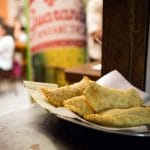 December 18, 2013 Best Bites of 2013
December 18, 2013 Best Bites of 2013
Editor’s note: This post is the third installment of “Best Bites of 2013,” a roundup of […] Posted in Rio April 24, 2019 Meet the Vendors
April 24, 2019 Meet the Vendors
Nine Inch Nails. Metallica. Tool. Rage Against the Machine. The driving beats, shredding […] Posted in Mexico City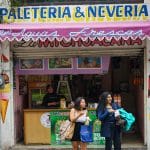 August 16, 2018 Paletas and Raspados
August 16, 2018 Paletas and Raspados
Mexico City is blessed with great weather all year round. Summer is not very hot because […] Posted in Mexico City
Published on February 13, 2015
Related stories
December 18, 2013
RioEditor’s note: This post is the third installment of “Best Bites of 2013,” a roundup of our top culinary experiences over the last year. Stay tuned for “Best Bites” from all of the cities Culinary Backstreets covers. Bar do Adão There are so many good fillings – 65, in fact – for the pastéis, or…
Learn more about Mexico City’s markets on our walk!
April 24, 2019
Mexico CityNine Inch Nails. Metallica. Tool. Rage Against the Machine. The driving beats, shredding guitar solos and iconic howls are attention grabbing to say the least as you meander through the colorful labyrinth that is Mercado de Coyoacán. From its famous tostadas and comida corridas to spiritual cleansings using Santa Muerte magic and all things Frida…
August 16, 2018
Mexico CityMexico City is blessed with great weather all year round. Summer is not very hot because it’s the rainy season, and at 2,200 meters above sea level, things cool down very fast as soon as the rain starts falling. However, we still get our hot days, especially in the spring, and even early afternoons in…







































